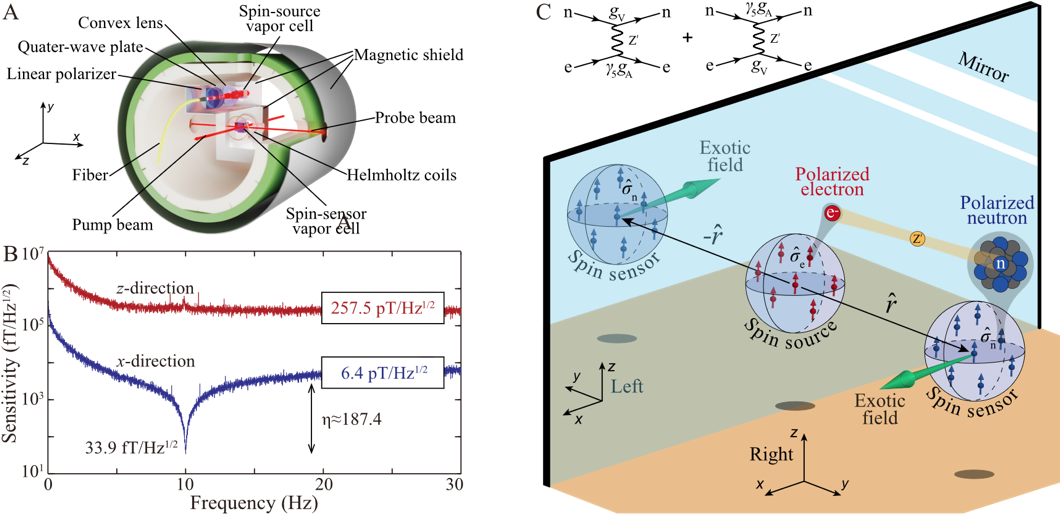Recently, a group led by Prof. PENG Xinhua and Associate Researcher JIANG Min from the University of Science and Technology of China (USTC) of the Chinese Academy of Sciences (CAS) made significant progress in quantum precision measurement and testing beyond the standard model, using self-developed quantum spin amplifiers to achieve ultrasensitive search for exotic parity-violation interactions beyond the standard model, with the experimental results improving the previous limits by at least five orders of magnitude. The research was published in Science Advances.
There are physical phenomena like dark matter, dark energy and neutrino oscillation that can’t be well interpreted by the standard model. Therefore, many theories have predicted the possible existence of new light bosons beyond the standard model, such as axions, dark photons and Z bosons, which could be candidates for dark matter and complement the existing standard model. However, the de Broglie wavelengths of these new particles with low energy (far less than 1eV) are even larger than current colliders, making it unsuitable to study them with high-energy devices such as particle colliders and accelerators. Quantum sensors like atomic magnetometers fill the gap in detecting such ultralight dark matter candidates. Because of the extremely weak exotic interactions beyond the standard model, a highly sensitive quantum sensor is needed.

The experimental setup and detection sensitivity of the search for exotic interactions. (Image by WANG Yuanhong et al.)
Prof. PENG Xinhua's group used the recently developed quantum spin amplifier to amplified the magnetic signal by two orders of magnitude. This amplification technique is used to search for new particles and exotic interactions beyond the standard model in the SAPPHIRE project (Spin Amplifier for Particle PHysIcs Research). In the experiment, the team used two atomic gas cells, one filled with Xe as the spin sensor, the other one filled with Rb as the spin source. The laser beam pumped the Rb atoms to reach about 1014 polarized Rb electron spins, thereby generating an oscillatory field which would be amplified and detected.
Compared to other resonance techniques, this amplifier enables continuous search for exotic fields because the Xe nuclear spins are polarized continuously by spin-exchange collisions with polarized Rb. This experiment has improved the previous experimental limit on the exotic parity-violation interactions between electrons and neutrons by five orders of magnitude. It has provided the first exploration of the exotic interaction between neutrons and protons. Moreover, the SAPPHIRE program still has a lot of room for performance improvement, and the researchers proposed to use the K-3He spin amplifier with solid-state spin sources, which is expected to raise the experimental limit on exotic interactions by eight orders of magnitude.
The reviewers spoke highly of the work, saying that The result is clearly a major improvement for the field, What is particularly remarkable about these results is that they have established strong new constraints, which have improved prior bounds by several orders of magnitude, in a region of parameter space where there are little or no constraints from astrophysics. This result demonstrated the combination of quantum precision measurement techniques and particle physics research, which may stimulate various interests in fundamental sciences like cosmology atomic-molecular physics.
Paper link: https://www.science.org/doi/10.1126/sciadv.ade0353
(Written by MA Xuange, edited by ZHANG Yihang, USTC News Center)
